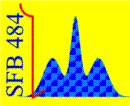
Third International Workshop 2008
Ordering Phenomena in Transition Metal Oxides
October 5 - 8, 2008, Augsburg, Germany
|
Welcome Conference Venue Accommodation Group Photo Invited Speakers (with Abstracts) Program Poster Session Technical Information Organization Travel Information Weather SFB 484 Institute of Physics |
|
Invited Talk
|
|
| Atsushi Fujimori (Tokyo) | |
|
Electron correlation and electron-phonon interaction in perovskite oxides from ARPES data
|
|
|
Transition-metal oxides ABO3 with the perovskite structure show a variety of physical properties such as Fermi-liquid behavior, metal-insulator transition, colossal magneto-resistance and various types of spin-orbital-charge ordering. However, experimental information about their electronic structures has been limited compared to oxides with layered structures such as high-Tc cuprates primarily because angle-resolved photoemission spectroscopy (ARPES) experiment has been difficult to perform due to the lack of cleaved surfaces. Recently, ARPES experiment has become feasible when electrically neutral surfaces are exposed by cleaving or atomically flat surfaces are synthesized by molecular beam epitaxy using pulsed laser deposition technique. In this talk, ARPES results on perovskite-type Ti, V, Mn and Fe oxides are presented and analyzed based on first-principles LDA and empirical tight-binding band-structure calculations. Effects of electron correlation have been observed as a renormalization of the coherent quasi-particle (QP) band in metallic compounds, SrVO3 (d1) [1] and La1-xSrxMnO3 (d4-x) [2]. Not only the coherent part but also the incoherent are found to show significant band dispersion. Bandwidth control has been confirmed for SrVO3 and CaVO3 from ARPES data, as well as for La0.6Sr0.4MnO3 and Pr0.6Ca0.4MnO3 [3]. Effects of electron-phonon interaction have been observed as a polaronic shift of energy bands in insulating SrTiO3 (d0) and La1-xSrxFeO3 (d5-x) [4] and as a broadening and weakening of the QP band near EF in La1-xSrxMnO3 [2]. This work has been done in collaboration with T. Yoshida, H. Eisaki, Z.-X. Shen, H. Wadati, M. Takizawa, A. Chikamatsu, M. Minohara, H. Kumigashira, M. Oshima, M. Lippmaa, M. Kawasaki and H. Koinuma and supported by JSPS and MEXT, Japan. Experiment has been done at Stanford Synchrotron Radiation Laboratory operated by the DOE’s Office of Basic Science and at Photon Factory, KEK. [1] T. Yoshida et al., Phys. Rev. Lett. 95, 146404 (2005); M. Takizawa et al., submitted. [2] A. Chikamatsu et al., Phys. Rev. B 73, 195105 (2006); 76, 201103 (2007). [3] H. Wadati et al., Phys. Rev. Lett. 100, 026402 (2008). [4] H. Wadati et al., Phys. Rev. B 74, 155114 (2006). |
|
|
previous / next - Invited Speakers - Program |
|
| [ 21-Apr-17 ] | [ http://www.physik.uni-augsburg.de/sfb484/Augsburg2008/abstracts/fujimori.shtml ] |